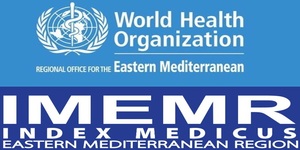Quality of Life among Adolescents with Type I Diabetes Mellitus at AL-Najaf Center for Diabetes and Endocrine
DOI:
https://doi.org/10.36321/kjns.vi20181.2268Keywords:
Adolescents, Type I Diabetes Mellitus, Quality Of LifeAbstract
Aims of the study: To assess the quality of life among adolescent with type I diabetes mellitus and to identify the relationship of adolescents quality of life and their demographic data.
Methodology: A cross-sectional descriptive design is carried out in AL-Sadder Medical City/ AL-Najaf Center for Diabetes and Endocrine, from September 20th, 2016 until July 5th, 2017. A Non-Probable (Purposive Sample) of (150) Diabetes Mellitus Adolescents is selected: they visited Al-Sadder Medical City at Al-Najaf Center for Diabetes and Endocrine. The data were collected through the use of well-designed questionnaire, consisting of three parts: the first part is the socio demographic data form, socio- economic status scale of the family and Anthropometric Measurement of Weight and of Height. The second part is the clinical data for adolescents that consists of (8) items. The third part is the quality of life domains that consists of (51) items. The reliability of the questionnaire was determined through a pilot study and the validity was determined through a panel of (17) experts. The data were described statistical, and analyzed through the use of descriptive statistical and inferential statistical methods.
Results: the highest percent 58.0% of the adolescents was male gender; 74.7% of the adolescents have normal weight; whether the type of treatment was injection in 98.7% of adolescents; the measurement of the HbA1c was > 6.5 in 80.7 of the adolescents; mean of score for QOL was 2.22 (moderate) because the lowest scores were reported by adolescents (social and communication) domain.
Conclusion: the study concluded that quality of life as moderate. Specific domains that lead to the deterioration of quality of life, including social and communication, were identified. Almost adolescents have elevated HbA1c that occur as a result of not following doctor order concerning monitoring eating regimen levels and refused frequency blood glucose monitoring. Male and late adolescent age/ were majority adolescents with T1DM.
Recommendation: Instruction and educational sessions must take place thoroughly for the adolescents with Type I Diabetes Mellitus to improve their quality of life. Carbohydrate intake must be monitored, by carbohydrate calculating or the estimation based on experience. This is a key strategy for achieving glycemic control. Caregivers and school teachers should be knowledgeable about how to administer insulin based on, doctor orders in case the adolescent is incapable of personal achieve.
Downloads
Downloads
Published
How to Cite
Issue
Section
License
Copyright (c) 2018 Kafi M. Naser, Anas A. Hussain, Deeaa K. Abd Ali

This work is licensed under a Creative Commons Attribution 4.0 International License.













